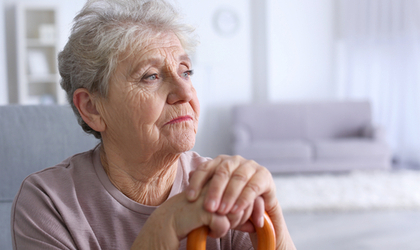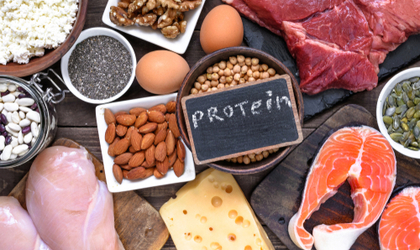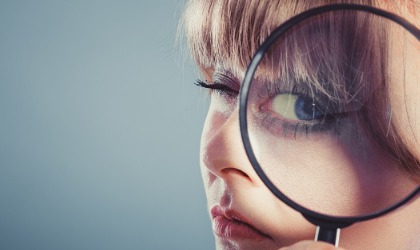
Countless factors will affect your bone health as you age – some you can change, others you can’t. Nevertheless, it still pays to be cognisant of the risk factors. The more you understand about how your individual makeup affects your bones, the sooner you can take the correct steps to prevent, detect, and minimise bone mineral loss. Sadly, many people find out about their bone deterioration before it’s too late. The good news is that you’re never too young or old to start prioritising your bone health.
Age
Just like skin, eyesight, and hearing, bones wither with age. From the age of 40, peak bone mass starts to decline for both men and women. Up until this point, the body eliminates old bone seamlessly and replaces it with new bone in a process called ‘resorption’. When the big ‘4 0’ comes round, however, less bone is replenished in the body. Worldwide, 1 in 5 men over age 50 will experience low bone density fractures, as will 1 in 3 womeni. In other words, older adults are much more likely to suffer a fracture than their younger counterparts.
Gender
Women, especially post-menopausal women, are more prone to bone loss than men for a number of reasons. Not only do women tend to have thinner, smaller bones than men, but when the menopause strikes, oestrogen – a hormone famous for protecting bones – decreases sharply, which can trigger bone loss. That’s why nearly 75% of hip fractures occur in womenii. Perhaps that can also explain why, in women over 45 years of age, low bone density is responsible for more days spent in hospital than many other diseases.iii
Menopause or hysterectomy
As aforementioned, there’s a reason why women are disproportionately impacted by poor bone health. One word: hormones. When the bone-protective hormone, oestrogen, starts to diminish in the body during the menopause, bones can become porous and brittle. In fact, women can lose a whopping 20% of their bone mineral density in the five to seven years after the menopauseiv. A hysterectomy, accompanied by the removal of the ovaries, can also contribute to weak bones. This operation significantly reduces the amount of oestrogen in the body, making low bone density and bone fractures more likely.
Family history
If brittle bones run in your family, or you have a parental history of fracture, then you may be more vulnerable to developing them yourself. Use this an incentive to be extra vigilant with your bone health and be sure to consult your GP should you have any queries.
Ethnicity
There’s a growing raft of evidence to suggest low bone density and fractures are more prevalent in Asian and Caucasian populations, with the incidence of fractures in the spine and hip being much higher in white than black individualsv.
Medication
It’s also possible that some medications may directly weaken bones or increase the risk of fracture, too. If you’re taking any of the following drugs, consult your doctor about their potential impact on bone health.
-
Antacids
-
Lithium
-
Certain anticonvulsants
-
Certain antipsychotics
-
Certain antiepileptic drugs
-
Certain steroid hormones
-
Thyroid hormone treatment
-
Glucocorticosteroids
-
Proton pump inhibitors
Lifestyle factors
Though you can’t affect many of the factors outlined above, you can actively change your lifestyle to bolster and protect bones. To keep fractures and low bone density at bay, be sure to focus on the following areas of your daily life.
Nutrition
The TV ads have taught us from a young age that bones need calcium to grow big and strong. But this is only half the story. Sure, you need calcium to build bones, but you also require the help of vitamin D to support the proper absorption and utilisation of calcium. Failure to get enough of these bone-building nutrients will conspire to hijack your skeletal system. Don’t forget, calcium-rich foods exist outside the remit of traditional cheese and milk. Green leafy veggies, canned fish, nuts, seeds, and chickpeas are also teeming with this mineral. As far as the ‘sunshine nutrient’, or vitamin D, is concerned, look to the sky. When your skin is directly exposed to sunlight, the body can synthesize vitamin D. Aim for 15 minutes of unprotected sun exposure every day. Be sure to cram more vitamin-D rich foods (eggs, cheese, and oily fish) into your diet when the sun’s rays aren’t so readily available in winter months. Of course, taking a quality vitamin D supplement that packs 10mcg is a simple way to plug any nutritional gaps you encounter, and comes highly recommended by the NHS and Public Health Englandvi. Bone up on your bone nutrition here.
Exercise
Leading a primarily sedentary life won’t only jeopardise your circulatory health, waistline, and overall wellbeing, it will harm your bones, too. Though flexibility and strength-training also come into the equation, you should primarily focus on performing weight-bearing exercise – activity that keeps you on your feet and aims to work your muscles and bones against gravity. Running, dancing, brisk walking, or higher impact sports, like tennis, football and squash will strengthen bones. Even if you’re prone to fractures, you should still make a concerted effort to perform regular exercise. Remember, moving your body doesn’t have to feel like a chore: join a Zumba class with friends, cycle to work, or go Nordic walking at the weekend. Your bones – and the rest of your body – will thank you for it. Discover all you need to know about exercising for bone health here.
Take it easy on the tipples
Beyond impacting your liver, heart, and many other areas of health, drinking to excess doesn’t bode well for bones. In addition to interfering with the balance of calcium in the body, which, as we already know, is crucial for building and sustaining strong bones, alcohol abuse can also skew the production of vitamin D – another essential nutrient required for the absorption and utilisation of calcium. Be mindful the National Drinking Guidelines warn men and women against exceeding 14 units of alcohol per week. Moving forward, why not use smaller glasses for your tipples so you aren’t tempted to guzzle more?
Avoid smoking
You’re probably not surprised to see smoking here. You only have to look at the wealth of compelling data to understand this fiercely addictive habit is one of the worst vices for bones: it leads to decreased bone mineral density and paves the way for low bone densityvii. Kicking smoking won’t just benefit your bones; your heart, lungs, and overall wellbeing will benefit enormously, too. Yet another reason to quit, right?
References:
-
Kanis. J.A., Johnell. O., Oden. A., et al. (2002). Long-term risk of osteoporotic fracture in Malmo. Osteoporos Int. ;11:669.
-
Jordan. K.M. & Cooper. C. (2002). Epidemiology of osteoporosis. Best Pract Res Clin Rheumatol. ;16:795.
-
Kanis. J.A., Delmas. P., Burckhardt. P., et al. (1997). Guidelines for diagnosis and management of osteoporosis. The European Foundation for Osteoporosis and Bone Disease. Osteoporos Int. ;7:390.
-
NHS.UK. (2019). Menopause and your bone health. Available online: https://www.nhs.uk/live-well/healthy-body/menopause-and-your-bone-health [Accessed 30 Apr. 2019].
-
Cauley. J.A. (2011). Defining ethnic and racial differences in osteoporosis and fragility fractures. Clinical orthopaedics and related research. ;469(7), 1891–1899.
-
GOV.UK. (2019). PHE publishes new advice on vitamin D. Available online: https://www.gov.uk/government/news/phe-publishes-new-advice-on-vitamin-d [Accessed 30 Apr. 2019].
-
Law. M.R., Hackshaw. A.K. (1997). A meta-analysis of cigarette smoking, bone mineral density and risk of hip fracture: recognition of a major effect. BMJ. ;315:841-6.
You Might Also Like

Olivia
Olivia Salter has always been an avid health nut. After graduating from the University of Bristol, she began working for a nutritional consultancy where she discovered her passion for all things wellness-related. There, she executed much of the company’s content marketing strategy and found her niche in health writing, publishing articles in Women’s Health, Mind Body Green, Thrive and Psychologies.
View More



